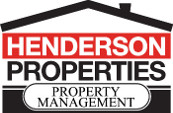Pricing, Concessions & Renewal Tactics for 2026
Charlotte’s rental market begins 2026 with challenges and opportunities. RealPage data shows rapid growth in multifamily inventory in 2025, with thousands of new units completed and leased.
This uptick creates a “lease-up shadow,” meaning existing properties must compete with new units that are filling up quickly. Axios insights show asking rents in Charlotte stayed stable in early 2025, indicating steady demand that may not be enough to absorb all new units.
This means renters now have more choice, which means your strategy needs to be sharper! Simply listing at the same rent you used two years ago and hoping for the best won’t get you the same results.
Pricing With Purpose
First, you’ll want to define your true competitive set. That means looking not only at older properties in your sub-market, but also at the new Class A developments that your ideal renter is comparing you to. Importantly, evaluate the effective rent, the monthly rent after factoring in any concessions, and use that as your benchmark, not just the advertised rate.
Once you have your comp-set data, run a short test window of 7 to 10 days to evaluate your price. Try three levels: one that matches the market median, one slightly below (if your finishes or amenities lag the competition), and one slightly above (if you genuinely offer better value). During that window, monitor the tour-to-application ratio to see which band produces the results.
Highlight your strengths, like reserved parking, pet policies, or fast maintenance. These appeal to renters and can justify keeping rents stable rather than offering discounts.

Use Concessions Wisely
In markets heavy with new supply, concessions often become standard. RealPage data suggests that “first month free” deals have been increasingly common in Class A lease-ups. But remember: a concession is essentially a rent reduction disguised as a bonus, and it has a cost.
Before offering a concession, consider if a smaller monthly rent reduction (e.g., $50–$100) can achieve similar leasing results at a lower cost. Save full concessions for units that are underperforming or in sub-markets where new buildings are heavily promoted. When you do offer concessions, include specific terms, such as “apply by Sunday” or “13-month lease only,” rather than “until further notice.”
Using open-ended or blanket concessions trains renters to wait for deals and can hurt your long-term profits.
Your Renewal Strategy
Most landlords chase new leases, but the smartest owners protect existing ones. Every renewal reduces vacancies, helping Charlotte’s apartment supply keep pace with Charlotte’s growing population.
Start renewal talks about 45 days before the lease ends, focusing on relationships and rent. Identify residents likely to renew, those who need encouragement, and those who are hard to retain. Personalizing your approach makes renewals a reliable income rather than a guessing game.
The math makes the case for renewals clear. Losing a month of rent on a $1,900 unit costs roughly $1,900, not counting make-ready and marketing expenses. Offering a $40 monthly discount to secure a renewal costs only $480 a year, less than the cost of a single vacancy. Smart retention strategies don’t just fill units; they protect profits.
Here’s a simple framework to follow:
- Segment your residents. Group tenants into three tiers: reliable, moderate, and high-risk. For your best residents, offer two- or three-year renewals with modest rent increases (around 2.5–3%) and a small perk, such as free carpet cleaning or a smart thermostat upgrade, to reinforce loyalty.
- Present clear choices. Around 30 days out, send two renewal offers: a shorter 12-month lease with a smaller increase, and a longer 15- or 18-month term with a slightly higher increase but guaranteed rate stability. Add a firm deadline to create urgency and prevent delays.
- Follow up personally. In the final two weeks before expiration, call or text residents to check in. Ask what might make them stay. Sometimes, a small accommodation, like adding bike storage, installing a pet gate, or repainting an accent wall, keeps a great tenant another year.

Fast Leasing in Early 2026
Speed matters more than ever in the earliest parts of 2026. With many new developments still leasing up, being first to market both in pricing and listing activation is essential. Launch with competitively sharp pricing, then consider upgrades if leasing velocity is slow.
Make sure your marketing clearly shows the full occupancy cost, including parking fees, pet fees, and utility obligations, so that your “true monthly” expense is transparent. Many renters evaluate units based on the effective monthly cost. Being upfront about the total cost provides you with a competitive advantage.
Monitor seasonality, as rent growth moderates in late winter/early spring, often leading to reduced traffic in January–February. Avoid panic discounts; track metrics and adjust accordingly. Weekly check neighboring new builds for concessions and price changes.

Ready to Build a Custom Strategy?
In Charlotte’s 2026 landscape, your success will hinge not on chasing the highest possible rent, but on setting it smartly, using concessions strategically, and protecting your base through renewals. Use effective-rent benchmarks, lean on renewal retention, and keep your marketing tight on total value, not just upgrades. With the right approach, you’ll retain occupancy and maximize yield in an environment where rental options are multiplying.
Contact us to receive your Free Rent Comp & Pricing Report. We’ll pull the latest effective-rent data for your address, map your competition, including new lease-ups, and provide a custom pricing and renewal plan for your unit and timeline.
* All data below is drawn from the most recent publicly available market reports and should be used as a guide. Conditions in 2026 may change as new supply, financing, and leasing behavior evolve.



